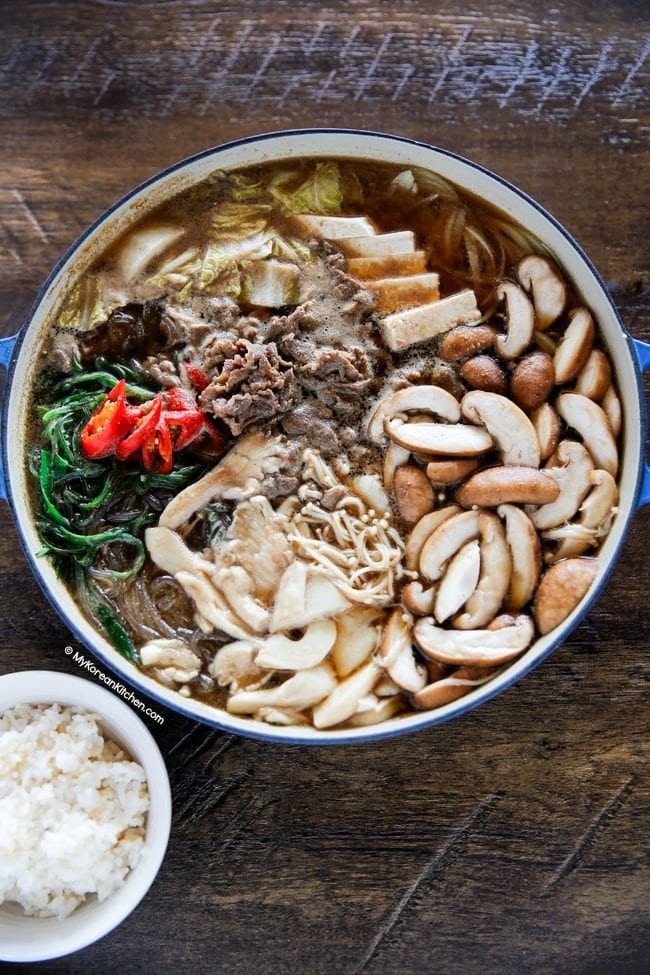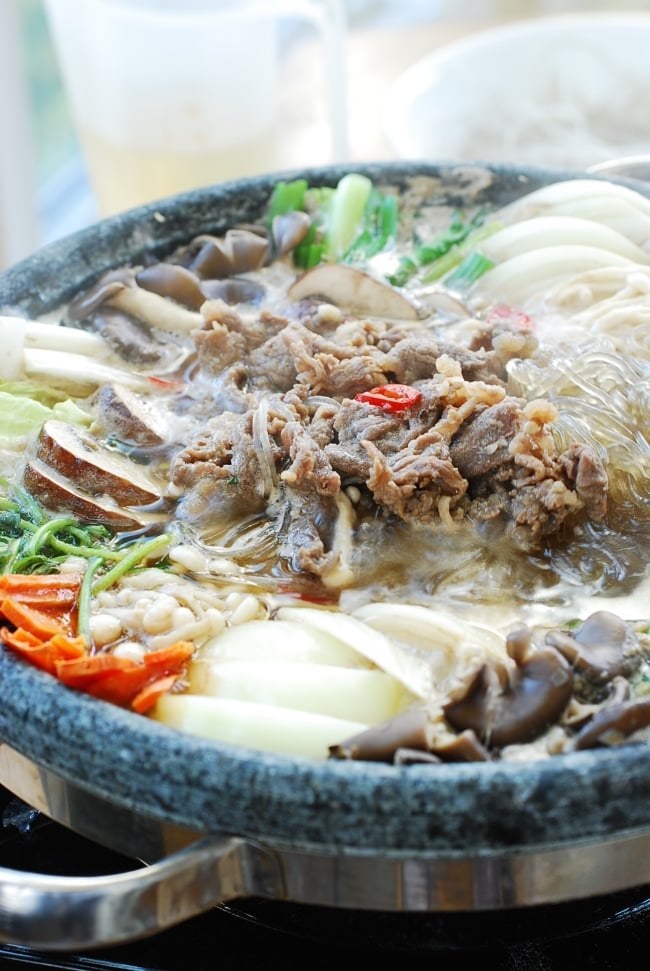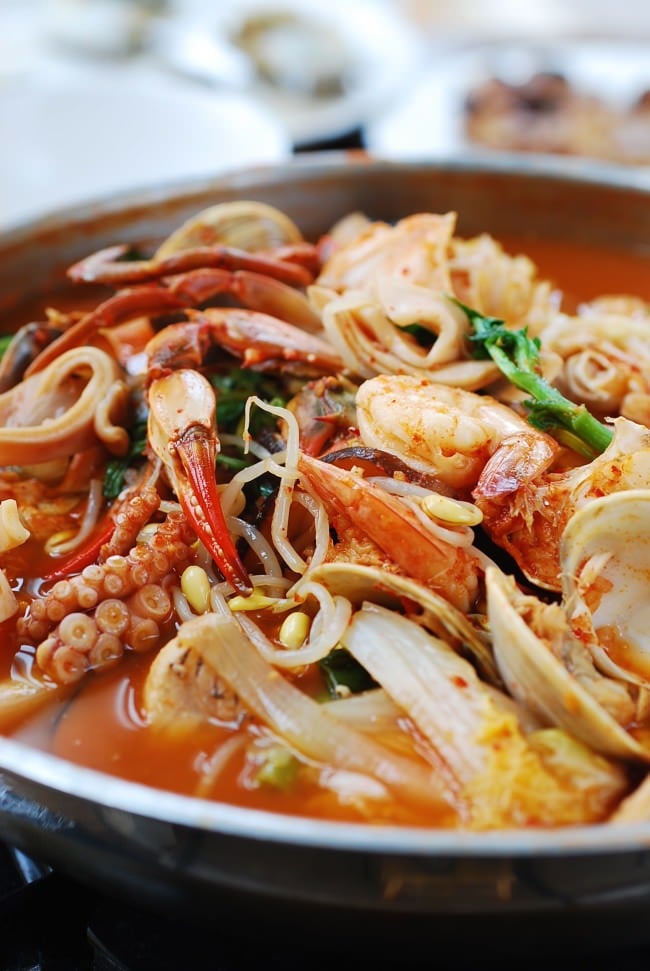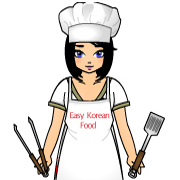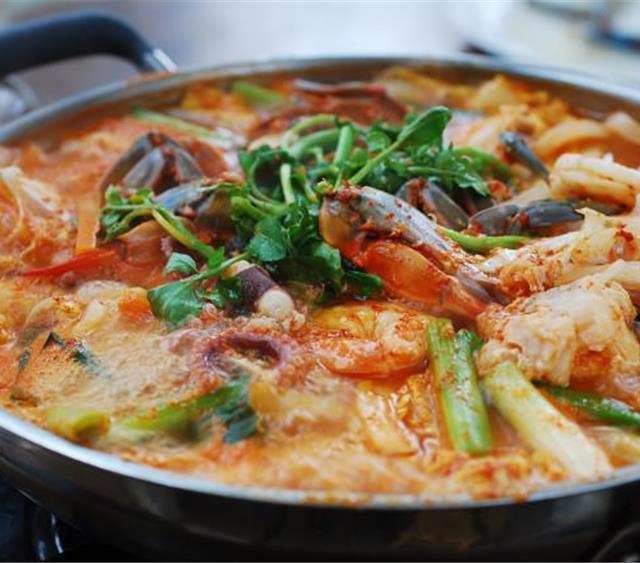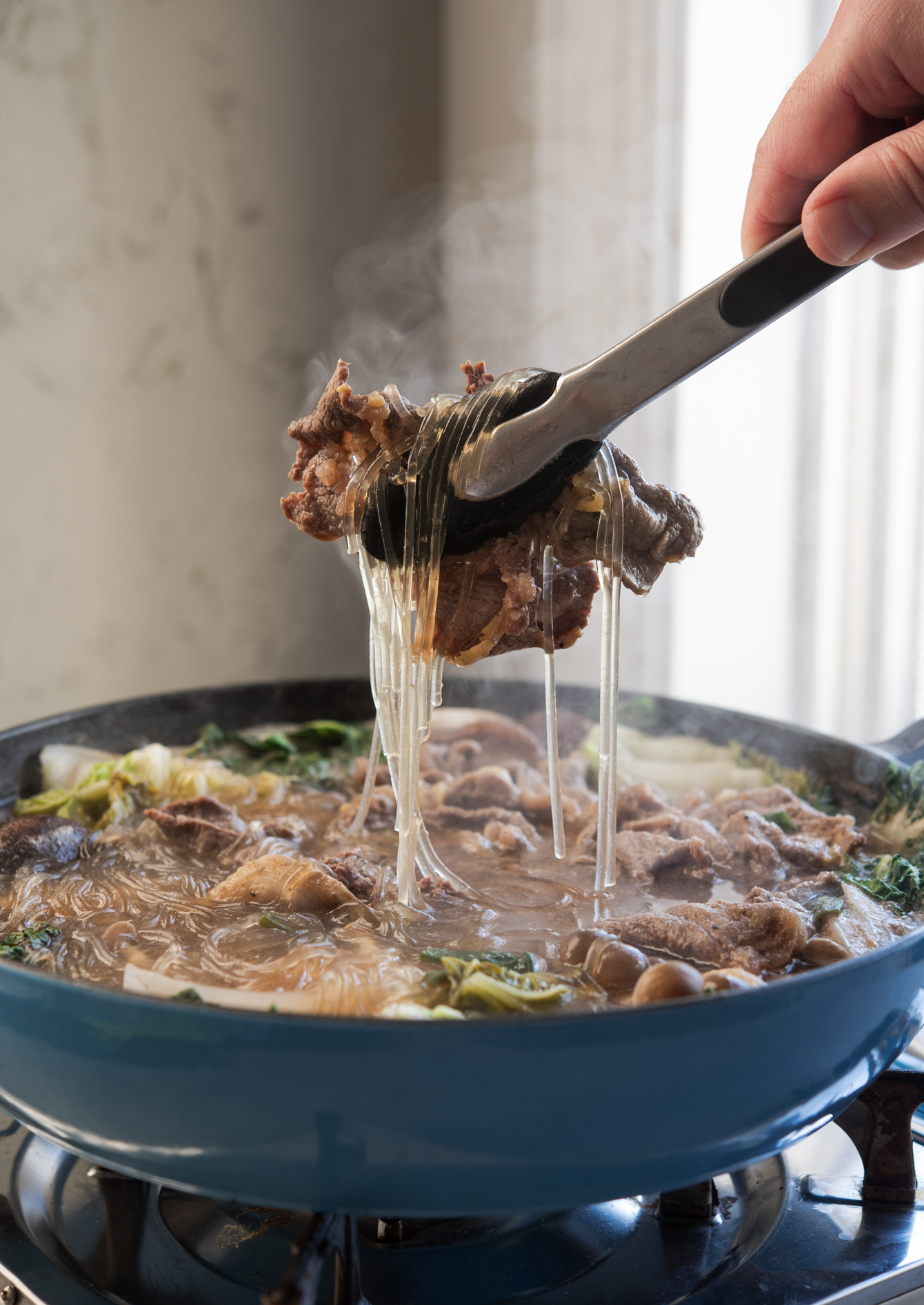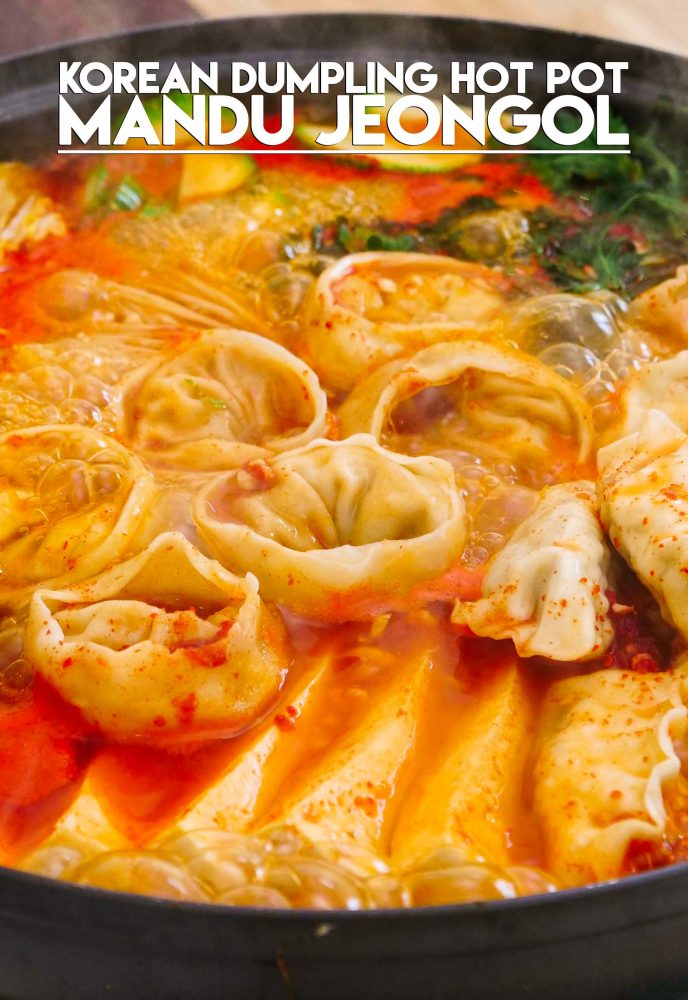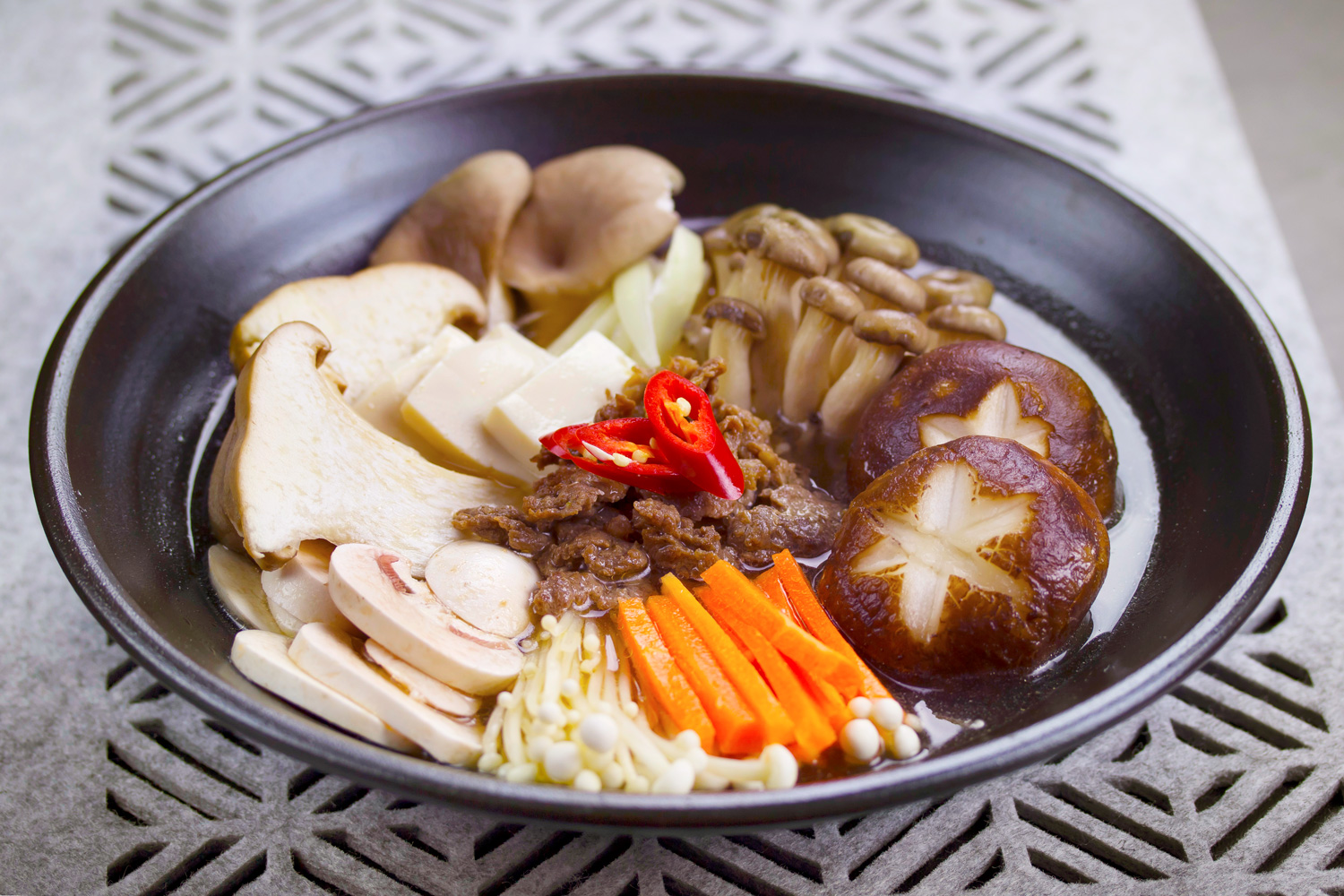Jeongol
전골
Jeongol is a Korean-style hot pot made by putting meat, mushroom, seafood, seasoning, etc., in a stew pot, adding broth, and boiling it. It is similar to the category of Korean stews called jjigae, with the main difference being that jjigae are generally made with only a single main ingredient, and named after that ingredient (such as kimchi jjigae or sundubu jjigae), while jeongol usually contain a variety of main ingredients. An additional difference is that jeongol (like gujeolpan) was originally a dish for upper-class Koreans and members of the royal court, while jjigae was a simpler dish for commoners. According to the late Joseon era book Manguksamulkiwon Yeoksa (만국사물기원역사; 萬國事物紀原歷史; lit. The History of Various Objects From Around the World), jeongol originated from ancient times when soldiers would cook their food in iron helmets during times of war for lack of cooking utensils. In other Joseon era documents such as Kyeongdo Jabji (경도잡지; 京都雜志), it is mentioned that jeongol was cooked in a vessel called jeolliptu (전립투; lit. soldier's hat) because it resembled a soldier's helmet. In Siuijeonseo, it is mentioned that thinly sliced seasoned beef was cooked in a pot and sprinkled with pine nut powder, and occasionally cooked with bamboo shoots, baby octopus and oysters. Jeongol usually contains sliced beef or seafood, vegetables, mushrooms, and other seasonings, which are boiled with a small amount of broth in a jeongolteul (전골틀, pot used for cooking jeongol). They may also include mandu (dumplings). Some jeongol are spicy, containing added gochujang or chili pepper powder, although these ingredients may be omitted. The variety of broth used varies according to the type of jeongol being prepared.
Source: Wikipedia
Recipes

Korean Dumpling Stew (mandu Jeongol) Recipe | The Feedfeed
